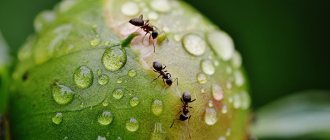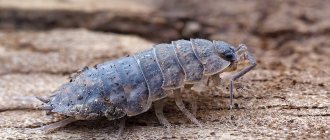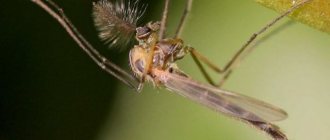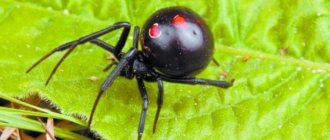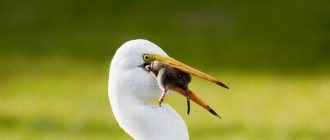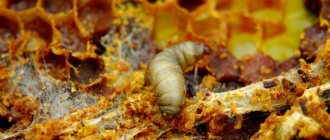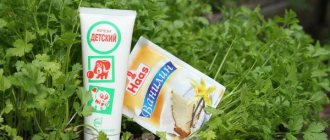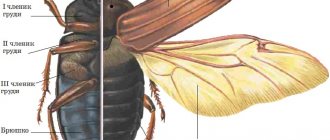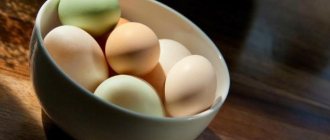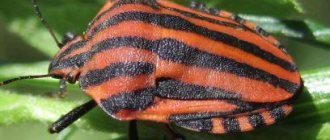If we look at the soil of your site in more detail, we can safely say that this is a real “hostel” for many insects. In most cases, they remain invisible and avoid coming to the surface, but contact is still inevitable while working on the ground. When planting plants, summer residents often encounter centipedes; the most common of them are geophiles and nooses, which can hardly be called pleasant. Even a small nod can cause disgust in a person; for many they seem terrifying and incredibly dangerous. But is it really worth worrying about these insects, what harm and benefits do they bring to the soil on the site.
Sign in OK
Centipedes: benefits and harm
The soil is a hostel where a huge number of small living creatures live that do not like to show themselves: the soil for them is a house-fortress, not a showroom.
However, at the end of spring, when the ground is warm (especially with a light drizzle), when summer residents and gardeners clear their plots of last year’s garbage, centipedes come into view. And later, when digging up beds with a fair amount of humus (or planting tomatoes), centipedes (the scientific name is more familiar to us - centipedes) are also visible. It’s difficult to call them beautiful, but the word “terrifying” is quite suitable, and it’s no wonder: few people are familiar with these inhabitants of the beds. Although, why the beds? We meet them in the garden, but in general centipedes live in forests and steppes. They do not like dry soil and sunlight; during the day they hide in shelters: in the soil, under stones, under piles of rotten leaves, even under logs, and sometimes under a bucket left between the beds.
Millipedes: nooses, drupes and geophiles
It's easy to identify each one. The nodule has many legs (more than a hundred pairs), but the animal is slow: until the first legs on the first segments turn to the last!
The legs are small (you still need to see them), thin and weak, which is why they are slow-moving: they move smoothly, slowly, bending like a gymnast’s ribbon in very slow motion.
Drupes are fast animals, but they have only 15 pairs of legs (strong, long).
If suddenly the shelter turns out to be broken into, then it is unlikely that it will be possible to catch the drupe, and not only because of the surprise of the meeting - it will quickly be able to hide in the crack. The light, thin body of the geophile is carried by more than 30 pairs of legs, carried quickly, but somehow not very skillfully, as if drawing a sine wave.
But this type of movement allows you to literally dig into the soil: the geophile has just been on the surface - and now there is no trace of him.
Woodlice also have many legs, although fewer than drupes.
Everyone is familiar with these animals, because we happen to meet them both in houses and apartments, and there are even more of them in the garden. But woodlice are not related to centipedes; they are related to crayfish: they breathe, like crayfish, with gills, and therefore always live in damp places.
Woodlice in greenhouses can damage seedlings, sometimes they act out in flower beds, but they prefer weeds, so they do not cause much harm.
Sandy and gray nooses rarely damage plant roots and strawberries lying on the ground. Dry weather forces hawksbills to feed on live plants because the animals do not have enough water.
Drupes can feed on young leaves if the necessary food is not enough.
It will be written about geophiles that there are known cases of damage to the roots and root crops of sugar beets.
Geophiles are predators; they feed on invertebrate animals; their diet includes small crustaceans, insects and their larvae, nematodes and roundworms, as well as what remains of invertebrates.
Drupes are also predators. They feed on small insects: worms, caterpillars, fools, ticks, flies, beetles, small spiders, mosquitoes and midges. Drupes tolerate low temperatures, therefore in cold weather, when caterpillars of leaf rollers or other eaters of garden and vegetable plants are very limited in movement, pests become easy prey for drupes.
The nooses are very voracious, feeding on fallen leaves, mushrooms, rotten shoots of plants, and fallen fruits. Chickweeds need calcium to create a shell, so they know how to accumulate it not only in their own bodies, but also in the soil. And calcium in the soil retains water. Kivsyaki ideally process manure. The resulting humus is the best fertilizer for plants.
Kivsyakov are considered soil formers. There are about 100 species in our country. Chickweeds have their own food specialization: they are more willing to eat leaves from alder and ash, like woodlice, although they do not refuse the leaves of apricot, acacia and poplar, and earthworms prefer hazel and elderberry leaves.
Woodlice make tunnels in the ground - this is how new pores appear, the soil is better saturated with air. After woodlice, humus appears instead of plant residues.
So what is more - harm or benefit?
Sometimes it is important to decide for yourself what is more important: a few plants that cannot produce a full harvest, or soil fertility and a reduction in the number of pests.
Source
From the life of centipedes
There are not many living things that I prefer not to handle. I can calmly take and examine creatures that are not too aggressive and poisonous, be they spiders, snakes, lizards, mice, not to mention beetles and caterpillars. But there is one class of creatures that I must win in a difficult internal struggle to take into my hands. These are centipedes. Their wriggling pale long body with a huge number of sharp legs with claws awakens in me some kind of prehistoric instincts, from those times when these creatures were larger and all poisonous. Exactly the same phobias, and probably with the same roots, are caused by spiders in many people. Although, in fact, this is a rather harmless animal. And, unlike the tropics, where huge scolopendras and rather large nods live, in our country centipedes are represented by medium-sized and not very nasty flycatchers, as well as small drupes and geophiles living in the soil. Today's story and photos are about the latest.
When digging up beds in the garden, or lifting a rotten plank from the ground, you can see a thin and long, pale yellow body with a brownish tint to the head, a couple of centimeters long, dotted on the sides with a huge number of synchronously moving legs, movable antennae on the head and a forked “tail.” " behind. This is what the labiopods from the order Geophila (lat. Geophilomorpha) look like. Today I will show several photographs of these animals taken in early May, including scenes of two centipedes meeting and one small newborn, a colorless young centipede that has not yet acquired a colored shell.
Geophiles have a ribbon-like body, 3–4 cm long (some species living in the south of Central Asia reach 15 cm). They surpass all other centipedes in the number of legs; they can have from 31 to 177 pairs of legs. There are 14-segmented antennae on the head; there are no eyes. The body of geophiles is adapted to movement in passages and cracks in the soil, where they pursue their prey. They can not only run along soil holes, but also make passages, alternately inflating and compressing body segments and pushing apart soil particles. Their last pair of legs resembles antennae in structure and function. If geophiles come across an insurmountable obstacle, they move “backwards”, feeling the road with their antennae-like legs.
They are one of the most diverse orders of labiopods, numbering over 1,200 species. Geophiles are closely associated with the soil and usually never leave it. They are among the invertebrates that burrow deepest into the soil, to a depth of 1.5 m.
They feed on various invertebrate animals. Sometimes they attack prey that is larger than them. In this case, the centipedes repeatedly wrap themselves around the victim, for example, an earthworm, and dig into it with their jaws, swallowing blood rich in hemoglobin. Some geophiles can also feed on succulent, rotting plant roots. May harm sugar beet crops.
The breeding of geophiles is interesting. Between the walls of the passages, males stretch several web threads, on which they deposit droplets of seminal fluid - spermatophores. Females, accidentally passing through the passages, pick up spermatophores with modified limbs (gonopodia) located next to the genital opening.
After a few days, the female lays a bunch of eggs (15–30) and wraps herself around them, maintaining sufficient moisture. After the juveniles emerge, the female guards the cubs for some time and supplies them with food. Geophila females are a rare example of such ancient organisms caring for their offspring.
They live under bark, stones and in the soil, where they can penetrate very deeply. And some geophiles on the sea coasts sometimes hunt in the sea in the high tide zone. In the European part of Russia, long geophilus (Geophilus longicornis) up to 40 mm long is widespread. This blind animal of yellow or reddish color has from 41 to 82 pairs of equally long legs. It feeds on earthworms and larvae. We also have Escaryus retusidens, Geophilus proximus, Schendyla nemorensis, Arctogeophilus marcocephalus.
Source
Home keeping of scolopendra
Terrariums are used for breeding centipedes in captivity. This is a very mobile insect and at the same time aggressive. They live in captivity for up to seven years. If you have no experience in breeding centipedes, then it is best to study the literature and research all the safety precautions for their maintenance and breeding.
Scolopendra has a flexible pleural zone. Thanks to this fact, it can squeeze into the smallest cracks of any rocks and soil in order to hide securely. This centipede is the greatest escape specialist. When choosing a terrarium, pay attention to the length, width and height. Read the breeding guides; they contain the most complete information about such necessary things as buying a terrarium for centipedes. The soil must be moist and suitable for digging holes. There should be enough humidity, but it shouldn't be too wet.
Scolopendras are aggressive, but if you introduce crustacean woodlice, they will not touch them, since they do not perceive them as food.
Basically, for all types of centipedes, a temperature of 27 degrees is suitable. If you are getting a special species, consult with a specialist regarding temperature and housing conditions.
At home, it is advisable to feed scolopendra with grasshoppers or mealworms; overfeeding is not recommended. Usually they are fed 1-2 times a week. Scolopendra up to 15 cm in size will be satisfied with 5 crickets. Lack of appetite may mean that the insect is not hungry or is preparing for another molt.
How to get rid of centipedes in the garden forever
Millipedes are arthropod insects with numerous paired legs that extend from each segment. The number of pairs of legs depends on the type of pest, namely on the length and number of segments located on the body. Each type of centipede differs not only in size, but also in body color. The vast majority of millipede species are gray-brown or light brown. In this article we will tell you how to get rid of centipedes in the garden forever, and consider popular methods of pest control.
Centipedes live mainly in northern regions, in regions with a humid climate and damp summers. They do not tolerate exposure to sunlight well and are highly sensitive to drying out. They cannot tolerate heat, so they are active in the early morning hours before the dew disappears or in the evening.
Centipedes are most active in cloudy and rainy weather.
A favorable environment for the development and reproduction of centipedes is damp and moist soil. Centipedes live in the upper layers of the soil, in decomposing plant debris, and in a dead pile of fallen leaves. Found on soils amended with compost and manure. Slate, concrete slabs, stones, wood waste, and cardboard boxes serve as shelter for centipedes.
The table shows the types of millipedes that inhabit summer cottages and cause harm to berry and vegetable crops:
| Types of centipedes living in areas | Color and size of the pest | Harm |
| Kivsyak | up to 50 mm; brown or brown | It feeds on young roots and seeds. Destroys strawberries, strawberries and potatoes. |
| Multiconnection | up to 5 mm; gray-brown color. | Damages tubers of ornamental plants, potatoes, beets and carrots. |
| Blind centipede | up to 8 mm; gray | It feeds on plant waste, rotting vegetables and berries. |
| drupe | up to 40 mm, reddish-brown color | Affects wild strawberries and strawberries. It often harms raspberries, and on wet soils it harms black currants. |
| Multi-belt | up to 15 mm; dark gray or brown shade | Rotting vegetation, wood particles. |
Millipedes curl up into a ball to protect their eggs.
Centipede bite: what does it look like, is it dangerous for humans?
The bright color of centipedes indicates the poisonous nature of the insect. An insect bite can be compared to a wasp or bee sting. In terms of pain, one scolopendra bite can be equated to 20 bee stings. The poison does not lead to the death of a person, but the danger of death still exists if a person is allergic to scolopendra venom.
There are many opinions in the literature about the real sizes of centipedes. According to known facts, the largest scolopendra is located in Brazil. Its body length is 33 cm. Many claim that the bite of a giant scolopendra is fatal, but this is only known from words.
In Russia, you can meet scolopendra only in the regions - the Caucasus, Rostov region, Krasnodar region, Crimea. There are small individuals there - up to 14 cm, mostly ringed scolopendra, which goes out hunting at night and is not particularly aggressive towards humans. You can meet it completely by accident, for example, in a tent, in a sleeping bag or while collecting firewood for a fire. In such cases, the scolopendra may begin to defend itself and bite you; its plans did not include a targeted attack on a person.
Factors contributing to the appearance of centipedes in the garden
By and large, no area is immune from the appearance of centipedes. Let's consider the main factors contributing to the appearance of centipedes on the site:
Millipedes crawl into open areas to get food. They reproduce in humid conditions and in the absence of a direct light source. Millipedes by nature belong to the group of herbivorous insects, but some species feed on smaller insects. Herbivorous centipedes cause irreparable damage to agriculture, as they feed not only on the remains of decaying plant food and wood, but also on plant crops.
Millipedes go deep into the soil during dry seasons
In the table we consider what vegetation centipedes prefer to the greatest and least degree:
| Commonly affected plant crops | Plants that are less affected |
| Strawberry | Tomatoes |
| Strawberries | Beans |
| Potato | Melons |
| Carrot | Tubers of flowers |
| Beet | cucumbers |
| Cabbage leaves | Wheat roots |
| Turnip | Radish |
Millipedes destroy young plants and crops, which causes enormous harm to garden crops. Many species of centipedes destroy harmful insects and act as orderlies. You can meet them when loosening, digging the soil, forming holes and beds. They live in moist soil in beds in open and closed ground. They are localized in places near sewage drains, water taps, and artificial reservoirs.
During the cold season, they hide in warm and humid places until spring.
Agrotechnical methods of combating centipedes in the garden
Millipedes are very heat-loving insects; therefore, in early spring and late autumn they hide from cold temperatures in the soil or in a pile of plant debris. In order to prevent and control millipedes, it is recommended to carry out deep plowing twice a year - in spring and autumn. Centipedes die at low temperatures.
It is possible to prevent the development and destroy millipedes on the site if you regularly and promptly remove plant debris and debris. Boards, cardboard, slate, and slabs are good materials for sheltering from low temperatures and protecting offspring. It is recommended to regularly loosen the soil throughout the season. This procedure will reduce the accumulation of moisture in the surface layers of the soil.
To protect strawberries and strawberries in early spring, the top layer is mulched with straw or sawdust. Mulch protects the above-ground part of berry plants and insulates them from the top layer of moist soil. Many gardeners protect strawberries and strawberries from centipedes with the help of supports that are installed under the flower stalks.
What to do if you are bitten by a scolopendra?
The sting of a scolopendra is comparable to the sting of 20 bees at the same time, it is quite painful. Scolopendra venom acts immediately, leaving the skin red and painful.
It is best to prevent the centipede from biting or touching human skin with its legs, but if this happens, follow these rules:
- wash the area of contact or damage with soap and water, disinfect with alcohol;
- apply a sterile bandage for 12 hours, then change to a fresh one;
- give the victim plenty of clean water to drink;
- provide peace;
- do not drink alcoholic beverages, they speed up the metabolism and the effect of poison;
- seek help from a doctor.
Pregnant women, children, the elderly, allergy sufferers, and heart patients should urgently go to the hospital, otherwise the outcome can be tragic, even death.
Remember, scolopendra itself does not attack a person. If she notices you, she will rather try to run away with all her legs. But if she accidentally crawls under your clothes or into your tent, and you scare her, then in self-defense she will bite you.
Frequently Asked Questions When Wrestling
Question No. 1. How do nods and multi-connections get to summer cottages?
The pest enters planting areas with manure and compost. Many gardeners note that the pest can also enter the plots through straw.
Question No. 2. What means can you use to scare off the nooks?
Centipede pests do not tolerate soil treatment with a soap-kerosene solution. You can purchase a ready-made emulsion, which is diluted with water according to the instructions and the soil is treated on cloudy days or in the evening.
Question No. 3. How to prevent millipede outbreaks?
Pests readily lay eggs in composts and plant waste. You can prevent a proliferation outbreak by removing foliage and plant debris from the area, as well as getting rid of compost and manure.
Question No. 4. How to protect berries and vegetables from berries at the time of their ripening?
Carry out regular inspection of plants in order to promptly remove rotten crops. Rotten berries and vegetables attract pests. During the period of harvest ripening, lay the soil under the bushes with non-woven material, which will serve as a protective bedding.
Question No. 5. How to protect sown seeds from centipedes?
Before sowing, the seeds are soaked in a formaldehyde solution or a weak solution of potassium permanganate. The smell of the solution makes the seeds less attractive to millipedes.
Source
Grape snail
Sources
- Conformity assessment methods No. 2 2007; Standards and quality - M., 2007. - 174 p.
- Ministry of Sports of the Russian Federation. Collection of official documents and materials. No. 10/2016; Sport - M., 2016. - 828 p.
- Conformity assessment methods No. 9 2011; Standards and quality - M., 2011. - 910 p.
- Jafarli Nazim Azerbaijan Safavid State; Legal Center - M., 2009. - 532 p.
- Foreign banking law (banking law of the European Union, France, Switzerland, Germany, USA, China, Great Britain). Tutorial; Prospect - M., 2010. - 580 p.
Geophiles in the garden: harm or benefit
Centipedes: harmful or beneficial animals?
However, at the end of spring, when the ground is warm (especially with a light drizzle), when summer residents and gardeners clear their plots of last year’s garbage, centipedes come into view. And later, when digging up beds with a fair amount of humus (or planting tomatoes), centipedes (the scientific name is more familiar to us - centipedes) are also visible.
It’s difficult to call them beautiful, but the word “terrifying” is quite suitable, and it’s no wonder: few people are familiar with these inhabitants of the beds. Although - why the beds? We meet them in the garden, but in general centipedes live in forests and steppes. They do not like dry soil and sunlight; during the day they hide in shelters: in the soil, under stones, under piles of rotten leaves, even under logs, and sometimes under a bucket left between the beds.
Millipedes: nooses, drupes and geophiles
It's easy to identify each one. The nooses have a lot of legs (more than a hundred pairs), but the animal is slow: until the first legs on the first segments come to the last ones!
Kivsyak gray. Photo from macroid.ru
The legs are small (you still need to see them), thin and weak, which is why they are slow-moving: they move smoothly, slowly, bending like a gymnast’s ribbon in very slow motion.
Drupes are fast animals, but they have only 15 pairs of legs (strong, long).
Common drupe. Photo from wikimedia.org
If suddenly the shelter turns out to be broken into, then it is unlikely that it will be possible to catch the drupe, and not only because of the surprise of the meeting - it will quickly be able to hide in the crack.
The light, thin body of the geophile is carried by more than 30 pairs of legs, carried quickly, but somehow not very skillfully, as if drawing a sine wave.
Geophil. Photo from macroid.ru
But this type of movement allows you to literally dig into the soil: the geophile has just been on the surface - and now there is no trace of him.
Woodlice , although fewer than drupes.
Everyone is familiar with wood lice
Everyone is familiar with these animals, because we happen to meet them both in houses and apartments, and there are even more of them in the garden. But woodlice are not related to centipedes; they are related to crayfish: they breathe, like crayfish, with gills, and therefore always live in damp places.
Centipedes: harm
Woodlice in greenhouses can damage seedlings, sometimes they act out in flower beds, but they prefer weeds, so they do not cause much harm.
nooses rarely damage plant roots and strawberries lying on the ground. Dry weather forces hawksbills to feed on live plants because the animals do not have enough water.
Drupes can feed on young leaves if the necessary food is not enough.
Drupe.
Photo from the website macroid.ru They write about geophiles that there are known cases of them damaging the roots and root crops of sugar beets.
Centipedes: benefits
Geophiles are predators; they feed on invertebrate animals; their diet includes small crustaceans, insects and their larvae, nematodes and roundworms, as well as what remains of invertebrates.
Drupes are also predators. They feed on small insects: worms, caterpillars, fools, ticks, flies, beetles, small spiders, mosquitoes and midges. Drupes tolerate low temperatures, therefore in cold weather, when caterpillars of leaf rollers or other eaters of garden and vegetable plants are very limited in movement, pests become easy prey for drupes.
The nooses are very voracious, feeding on fallen leaves, mushrooms, rotten shoots of plants, and fallen fruits. Chickweeds need calcium to create a shell, so they know how to accumulate it not only in their own bodies, but also in the soil. And calcium in the soil retains water. Kivsyaki ideally process manure. The resulting humus is the best fertilizer for plants.
Kivsyak. Photo from farm2.static.flickr.com
Kivsyakov are considered soil formers. There are about 100 species in our country. Chickweeds have their own food specialization: they are more willing to eat leaves from alder and ash, like woodlice, although they do not refuse the leaves of apricot, acacia and poplar, and earthworms prefer hazel and elderberry leaves.
Woodlice make tunnels in the ground - this is how new pores appear, the soil is better saturated with air. After woodlice, humus appears instead of plant residues.
Natural enemies of centipedes
In their natural habitat, scolopendras are also hunted by predators. At the same time, the diversity of species that eat centipedes is relatively small. The most dangerous natural enemies of the centipede are frogs, toads, small mammals (shrews, mice), and birds. Owls love to hunt centipedes. Also, scolopendra is a nutritious protein food.
Pets such as dogs and cats also eat flycatchers. But this can carry a certain danger, since parasites often live inside centipedes. When an animal eats a scolopendra infected with the parasite, it also automatically becomes infectious. Scolopendras are a tasty morsel for snakes and rats.
A large scolopendra can eat a smaller scolopendra.
Some peoples to this day consider scolopendra as a tasty and healthy food, because its body contains a lot of protein. In certain cultures, there is a belief that centipedes, as food, cure many diseases that are incurable with drugs.
Traditional medicine does not recommend eating scolopendra as food for people, especially in its raw form, because most individuals on the planet are infected with parasites. A dangerous parasite that lives in the body of a centipede is the rat lungworm. This parasite causes a dangerous disease that leads not only to incurable neuralgic diseases, but even to death.
